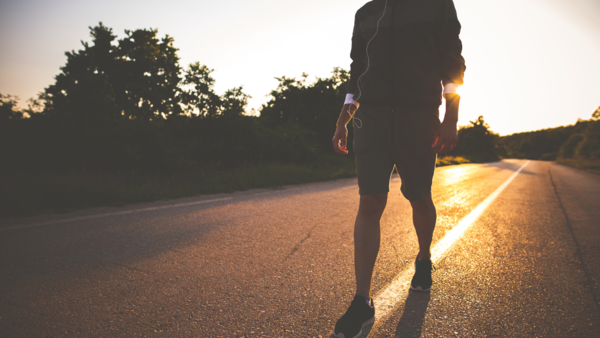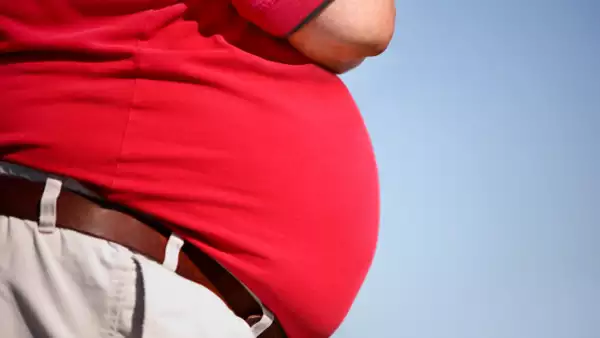
What is a walker’s belly, and how to get rid of it? – The Times of India
Walking is considered one of the best low-impact exercises for maintaining overall health. However, some individuals notice an unexpected issue—an increase in belly fat or bloating despite regular walking. This phenomenon, referred to as “Walker’s Belly,” has left many fitness enthusiasts puzzled. Why does it happen, and more importantly, can it be fixed?
Understanding the root causes of this issue is essential. Walker’s Belly is not just about excess fat; it involves factors like posture, digestion, and muscle engagement. The good news is that with the right approach, it can be managed effectively.
What is walker’s belly?
Walker’s belly refers to an unusual bloating or stubborn fat accumulation in the abdominal area despite consistent walking. Many individuals expect walking to tone the stomach, but instead, they experience puffiness or a lack of noticeable weight loss around the midsection.
This condition is not necessarily a sign of poor health, but it indicates that certain aspects of walking mechanics, diet, or muscle engagement need to be adjusted.

We all are on our feet almost every day. This daily activity, walking, is also considered one of the simplest and most effective ways to stay fit. But did you know that small mistakes in our walking routine can lead to pain, injuries, and even long-term health issues?
How is walker’s belly formed?
There are several reasons why this phenomenon occurs:
Posture problems : Incorrect walking posture, such as slouching or leaning forward, can cause the core muscles to weaken over time. A weak core may lead to poor muscle activation, causing fat to accumulate around the stomach.- Shallow breathing: Many people unknowingly engage in shallow breathing while walking, which limits oxygen intake and affects digestion. Inefficient breathing can contribute to bloating and poor core engagement.
- Digestive issues: Walking stimulates digestion, but if the gut is sensitive or the diet lacks balance, it may lead to bloating instead of fat loss. Overeating before a walk or consuming too many processed foods can worsen this effect.
- Water retention: The body sometimes retains water due to excessive sodium intake, hormonal fluctuations, or inadequate hydration. This can cause temporary bloating that mimics belly fat.
- Lack of strength training: Walking is great for cardiovascular health, but it does not significantly strengthen the abdominal muscles. Without targeted
core exercises , the belly may remain soft rather than firm.
Can walker’s belly be cured?
Yes! Walker’s belly is not a permanent condition. Once the contributing factors are identified, changes can be made to improve posture, digestion, and overall fitness. Unlike stubborn belly fat caused by prolonged unhealthy habits, walker’s belly is reversible with simple adjustments.

Tips to get rid of walker’s belly
Improve walking posture
A proper walking posture ensures that the core is engaged, reducing the risk of unnecessary belly fat accumulation. Some key posture tips include:
Keeping the shoulders relaxed and back straight.
Engaging the core while walking, rather than letting the belly hang loose.
Avoiding excessive forward leaning, which can weaken abdominal muscles over time.
Focus on deep breathing
Shallow breathing can make it difficult for the body to properly digest food and engage the core. Practicing deep belly breathing while walking enhances oxygen flow and prevents bloating. A simple method is diaphragmatic breathing—inhale deeply through the nose, allowing the belly to expand, then exhale slowly through the mouth.
Choose the right foods before and after walking
Diet plays a huge role in belly bloating and fat retention. To reduce walker’s Belly:
Avoid heavy meals before a walk, as undigested food can cause bloating.
Limit processed foods, refined sugar, and excessive sodium, which can cause water retention.
Include fiber-rich foods like vegetables, fruits, and whole grains to support digestion.
Drink plenty of water to prevent dehydration-related bloating.
Add strength training for core activation
Walking alone does not build strong abdominal muscles. Adding strength-based exercises like planks, leg raises, and Russian twists can help tone the core and reduce belly fat. Even 10 minutes of core workouts a few times a week can make a noticeable difference.
Avoid over-reliance on walking for fat loss
Walking is a great exercise, but relying on it alone for fat loss may not be effective. A well-rounded fitness routine that includes strength training, flexibility exercises, and mobility work helps target belly fat more efficiently.
Walker’s Belly is a common yet misunderstood issue that can be frustrating for those who walk regularly but see little change in their midsection. Understanding its causes and making small but effective changes in posture, breathing, diet, and exercise can lead to noticeable improvements.










